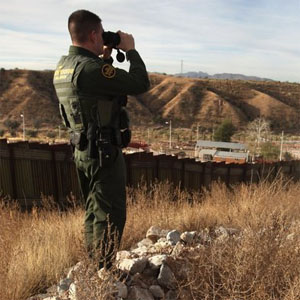My life in ATC began with 4 years Air Force then another 30 years with the Federal Aviation Admin. working tower & radar at some big international airports. I fought in the 1981 war with PATCO, survived the strike and kept a job that was just too exhilarating to walk away from. While there was nothing better than working airplanes, I did move on through several air traffic supervisory and management positions. It was a long, crazy career but I wouldn't trade a moment of it for love or lucre!
Excellent questions! It’s complicated but I’ll try to keep my answers short.
Tower controllers may cancel a previously issued takeoff clearance after the aircraft has begun takeoff roll, but only for purposes of safety. I’m sure I’ve done it. However, depending on the type of aircraft, runway length and other pertinent factors – the pilot my not comply. Every aircraft has a ‘point of no return’ relating to speed and runway length, beyond which it cannot safely abort the takeoff. Attempting to abort beyond that point could mean running out of runway before being able to stop the airplane. That’s a bad place to be because, unfortunately, there is usually something off the runway end that’ll stop that airplane anyway, regardless of speed!
There is good news though. Pilots of transport category aircraft are required to ensure the runway is long enough to allow takeoff to be safely continued or aborted from a predetermined go or no go point. That go/no go point is where the aircraft reaches its minimum takeoff speed, known in the business as “V1.” Once the plane reaches V1 speed, it can fly. Beyond that, there may not be enough stopping distance left for the pilot to comply with a controller’s instruction to cancel the takeoff clearance.
An accident occurred several years ago at one of our busier airports that illustrates the point. It involved a DC-10 (earlier version of the MD-11) that had reached the critical go/no go point when the flight crew believed there was an engine fire. Their attempt to abort was unsuccessful, resulting in the aircraft rolling off the runway end. Fortunately, no one was hurt and the plane was only minimally damaged. Investigators concluded the pilot should not have attempted to abort the takeoff. I hope I answered your questions!
Cheers,
Factor
To your first question, the answer is yes. Departure queues are normally managed by controllers working the ‘Ground Control’ position in the tower. They’re responsible for staging the departing flights at the runway, where pilots are instructed to contact another controller (Local Control) for takeoff clearance. There are many factors that can influence the departure sequence. I’ll touch on the most common ones.
Your second question is a bit more involved. Basically, ATC does not move “really late” flights to the head of the line. Under normal circumstances, departing flights are staged up on a “first come – first served” basis. The last aircraft to taxi out goes to the back of the line; arriving at the runway after all preceding flights have departed. There are, however, abnormal circumstances that may supersede the normal order. For example; adverse weather (such as a line of thunderstorms) may affect certain departure routes, causing flights headed that way to be delayed. In such cases; flights going in other directions may depart first – regardless of when they taxied. Also; Presidential movements, special military missions and certain civilian medical flights may get moved to the head of the line.
Sometimes the delaying factor is at the destination airport. A snowstorm in Boston may reduce the number of arrivals they can accept per hour (their acceptance rate), thus delaying your departure out of Miami. The same blizzard will affect departures from all over the place if their destination is Boston. In such cases, ATC may implement a computer program that assigns new departure times (referred to as “Expect Departure Clearance Times” or “EDCT times”) to flights headed for Boston. The program looks at several factors such as the airport acceptance rate, the arrival demand (all those planes sitting around elsewhere that want to go to Boston) and the time it will take them to get there. The program’s goal is to equitably assign departure times that will ensure an acceptable number of planes get to the Boston area each hour. Controllers at departure points (in this case, Miami) must, to the extent possible, plan ground movement of planes destined for Boston so that they are sequenced to depart no earlier than 5 minutes before, and no later than 5 minutes after the EDCT. Given that relatively narrow ten minute widow, your flight to Boston my actually depart ahead of other flights that taxied out before you!
Sorry for the essay! Your questions are good ones and the answers can be a little complicated.
Thanks for asking!
Factor
Thanks for writing. I must confess that I read only part of the book. Like the demise of RMS Titanic in 1912, 9/11 is an epic catastrophe that will live forever in the souls and sentiments of those who endured the day. I am still fascinated with Titanic’s story and never tire of the books, articles, websites, movies and TV specials about it. I believe my continued interest stems from the fact it happened long before I was born and, like so many other accidents, was the result of hubris and poor judgment. September 11 was much different. I was there and it was no accident.
On duty that morning, I witnessed enough of the horror and its effects on people to last a lifetime. Although I will never forget the day, it was a chapter in my FAA career that I don’t want to relive - either through my own or anyone else’s recollections.
I remember visiting with my mother a month or so after 9/11. In her teens when Pearl Harbor was attacked, she said she never imagined something so horrible could ever happen again. There was a look in her eye I had never seen before. “Touching History” brought back too many memories that I will never forget but don’t really want to recall either. I stopped reading. Who knows? Maybe I had that same look in my eye.
I knew a few of the folks mentioned in the book and can say that everyone rose to a challenge they could never have imagined. They were the best there was and that’s worth recalling!
Cheers,
Factor
Yes, the sky is very big but it becomes very small around those places where planes takeoff and land. Airports are all situated at the bottom of a very large funnel. Given the enormous volume of air traffic in our skies every day, the fact there aren’t more mishaps is a credit to the air traffic control system. Keeping airplanes separated, especially in the congested airspace around busy airports, isn’t easy. It requires a standard set of procedures, including routes into, out of and between airports that pilots and controllers understand and adhere to. It demands their constant focus because even a brief distraction can result in the loss of separation. Teamwork is key. Fatigue, inattentiveness, bad judgment, equipment malfunctions and other surprises can all contribute to those collisions and near misses you mentioned. Fortunately, such things rarely happen. An old controller buddy of mine used to say; “If you can hold a dollar between ‘em, they're not that close!” Hmm. Cheers, Factor
Pharmaceutical Researcher
 Is there or isn't there a cure for AIDS?
Is there or isn't there a cure for AIDS?
Border Patrol Agent
 Do you ever feel sorry for the illegals you catch trying to cross the border?
Do you ever feel sorry for the illegals you catch trying to cross the border?
MBA Student
 How many years of work experience do you REALLY need before applying?
How many years of work experience do you REALLY need before applying?
A relatively small amount of time is spent in that U-turn. Normally it’s just a few minutes out of a flight that could take hours. With little exception, ATC is required to use the runways most nearly aligned with the wind and most pilots, especially those flying large airplanes, will insist on it for safety purposes. Rather than seeing the big U-turn as a waste of fuel, it’s generally seen as a safety factor and part of the cost of doing business. And who knows. That westbound flight you mentioned could end up saving time by being able to land ‘straight in’ at its destination rather than having to make another U-turn to land from the West.
Those little exceptions I referred to? Well . . . if the surface wind is less than five knots, ATC is permitted to assign a downwind runway. The other exception is when a pilot asks to use a downwind runway and traffic conditions permit. That exception is fairly common after midnight when there isn’t much air traffic and winds are light and variable.
Air traffic control is very mindful of fuel consumption. When designing or redesigning aircraft routes, traffic patterns into and out of airports or other air traffic procedures – fuel consumption is always an important consideration. Having been involved in those processes for several years, I can tell you that close coordination was maintained with various aviation industry advocates. They were always happy to tell us if a proposed new route was going to save or cost them money! Sometimes such consultations resulted in us going “back to the drawing board!”
Cheers,
Factor
The most common reason for changing flight paths around an airport has to do with the current landing direction, which is a product of the wind direction. Planes like to land into the wind so, if surface winds around LaGuardia are out of the North, you’ll probably be landing on Runway 4 (compass heading 040 degrees). That’s the runway most nearly aligned with a North wind. As you’ll be approaching from the South, your flight path can give you a nice view of Manhattan. Approaching from the North for landing on runway 22 provides an entirely different viewing opportunity. Your views on departure will also be dictated by wind conditions and which runway is being used for takeoff.
Controllers get a great view from the tower but it’s always the same one! Enjoy that changing scenery as your flight lands or lifts off from any airport. You never know what you’ll see!
Thanks for writing. There are definitely strict guidelines regarding controller working hours. The most current information is covered in the latest Federal Aviation Administration - National Air Traffic Controllers Association contract, which I am not privy to.
Basically, a controller’s workday is 8 hours long. They can work no more than 10 hours per day and no more than 80 hours per a pay period (two weeks) unless they're working overtime. There must be an 8 hour break between shifts and a 12 hour break after a midnight shift. They can work no more than 2 continuous hours on a control position before being provided a break period.
My longest shifts occurred after the Professional Air Traffic Controllers Organization (PATCO) went on strike on August 3, 1981. Where I was working at the time, about 2/3 of our controller workforce walked out and were fired. Everyone left on the job was thrown into the fray. Ten hour days and six day weeks were not uncommon. Fatigue, brought on by the long hours and the stress of training newly hired personnel, definitely took its toll!
Cheers,
Factor
-OR-
 Login with Facebook
Login with Facebook (max 20 characters - letters, numbers, and underscores only. Note that your username is private, and you have the option to choose an alias when asking questions or hosting a Q&A.)
(A valid e-mail address is required. Your e-mail will not be shared with anyone.)
(min 5 characters)
By checking this box, you acknowledge that you have read and agree to Jobstr.com’s Terms and Privacy Policy.
-OR-
 Register with Facebook
Register with Facebook(Don't worry: you'll be able to choose an alias when asking questions or hosting a Q&A.)